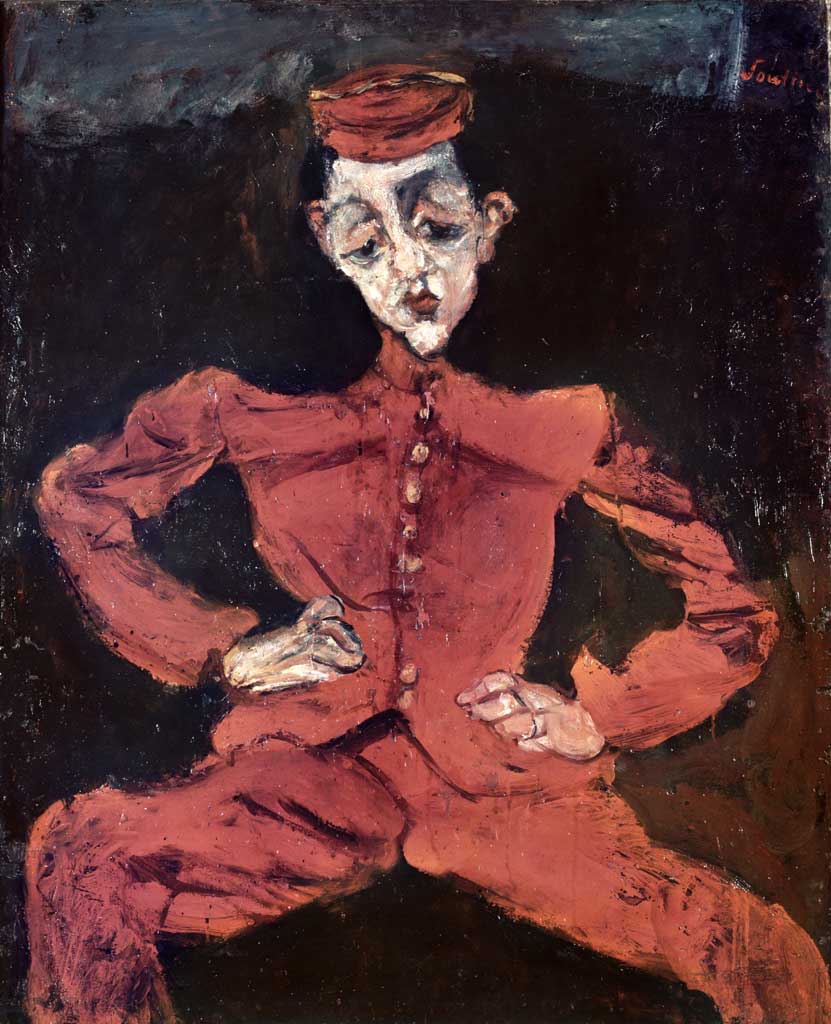Great Works: The Groom or The Bellboy, 1925-6 (98cm x 80cm), Chaim Soutine
Centre Pompidou, Paris

What's in a title? So Much. Or so little. Some painters love playing with them. Others call all their works "untitled", which is singularly unhelpful to the critic, whose job it is to identify, describe, and then sort one work from another. You have to forgive them though, those who opt not to opt for one. It requires a certain imaginative reach to find a good title, one that will both resonate with the work, and somehow extend our understanding of it in interestingly serendipitous ways. Some artists opt for the baldest of descriptions: "Gillian, with a Lemon", for example, or "Jeune Fille Lisante". Others can go to amazing lengths of obscurantism. You can understand why though, given our fallen state. Artists desperately want to associate themselves with great thoughts and great thinkers. Other people's, that is. If you can hitch your rackety wagon to a star that is eternally blazing in the firmament – try Nietzsche or Kierkegaard on for size today, sir – you rise all the higher in your own and other people's estimation – provided that the work you are striving to talk up is not too much of an embarrassment. Then you risk looking an idiot. And who chooses the title in the first place anyway, and when exactly does it get chosen? Gillian Ayres often lets her friends do the choosing, after the painting is made. Other works die untitled, and then find a posthumous identity thanks to a thoughtful curator or A.N. Other.
What exactly is going on here though? How can a work have two titles? And what exactly does it mean when that happens? Let us guess. Let us think about the mental state of Chaim Soutine, labouring in his small, wedged-shaped studio in Montparnasse. Soutine was a depressive, and his state of mind often seems to be present in his paintings, which are often – the buildings especially – subject to a terrible vertiginousness. So much is always wonky or askew. Nothing feels sturdy or solid. It seems to the onlooker that Soutine was always straddling, spindly legs on the quake, the San Andreas Fault, fearing the worst. And so it is here too. There is a terrible uncertainty about this painting, and that, in part, explains its power. It seems to mirror back at us our own uncertainties about the human state, the individual human's identity. "Who am I anyway?" this painting seems to be saying. "What am I doing here? Am I a bellboy or a groom? Or both?"
The first suggests long days of near obsequiousness, a human being at the beck and call of the importunate snap of the fat, beringed finger. The other suggests something more ritualistic and prideful, the groom, sanctified by society, raised up, set apart for the briefest of moments, by the ceremony of marriage. So is this uncertain man raised up or let down? He seems to be scarcely a man at all, so slack and marionette-like that body seems to be. Is it being danced by the manipulator of invisible strings? Is this a dance or a walk or merely a particularly defiant way of standing? It could be a posture – left leg extended to the full, right drawn back – from a choreographed sequence.
The face looks so strangely pallid, so ghostly, so clarted and smeary in its pallor, as if caught in lurid vaudeville lights. This face has been made up for the occasion – why otherwise would those eyebrows be so high-ached? The head sits oddly upon that thinnest of necks, tilted slightly askew, precarious in its positioning, as if it might just fall off. The lips are bunched and of a surprisingly fierce redness. The ears are comically rubbery. They are the joke ears of a Mr Potato Head. We could exchange them for a slightly different set if we chose to laugh in a slightly different way. Is this desperately thin man a figure of fun then? Not at all. His posturing looks desperately, desperately sad. That is why he both does and does not meet our gaze. He is not happy being his various selves.
Subscribe to Independent Premium to bookmark this article
Want to bookmark your favourite articles and stories to read or reference later? Start your Independent Premium subscription today.

Join our commenting forum
Join thought-provoking conversations, follow other Independent readers and see their replies